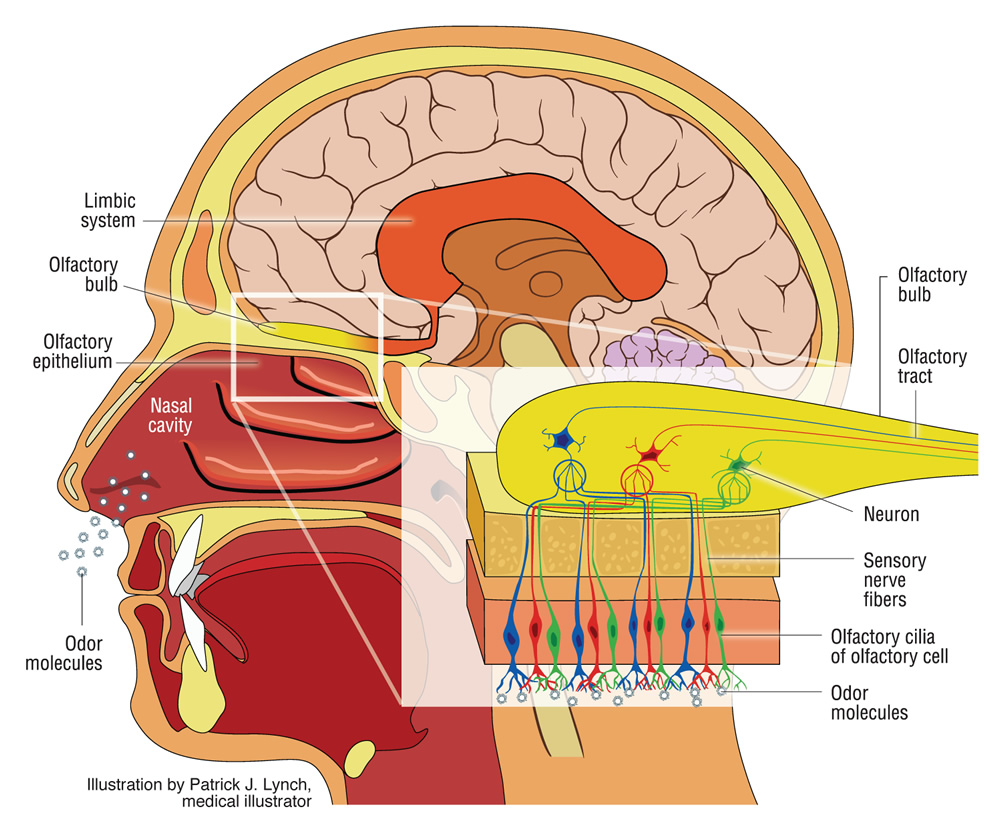Nora Goldstein
In the early 1990s, there was an advertisement in BioCycle by a company that built composting facilities. The ad essentially stated, “We have an odor-free composting operation.” The facility highlighted in the ad started up, had odors, didn’t have the financial capacity to make necessary infrastructure and operational changes, and it closed. It was a very expensive lesson on the critical need for odor management.
Organics recyclers’ understanding of what causes odors and how to best manage them has come a long way in the past 30 years. But as any operator will tell you, there is no place for complacency when it comes to odors. As I wrote in a 2006 article, one of the fundamentals of odors is, if it can stink, it will stink. Composting and anaerobic digestion facilities are handling materials that as they break down, can emit a host of unpleasant odors.
The positive side of this picture is that if it does stink, it usually can be fixed utilizing biofilters, compost and/or wood chip blankets on piles during the active phase of composting, avoiding anaerobic pockets, optimizing recipes, following good housekeeping practices, etc. These are best management practices (BMPs) that have withstood the test of time. Less understood in the formula for successfully managing odors is the human side — the physiological and psychological reactions to odors — and productive strategies to work with individuals impacted or potentially impacted by composting, mulch production, anaerobic digestion, and land application activities.
Odor compounds associated with organics recycling (Figure 1) include:
- Sulfur emissions, e.g., dimethyl disulfide, which smells like rotten cabbage, and hydrogen sulfide and methane thiol — all of which can be detected by humans at very low concentrations. These can be found in leachate and retention ponds with high nutrient loading.
- Nitrogen emissions, e.g., trimethyl amine, which has a fish odor and is difficult to biodegrade as microbes cannot easily break apart the molecules.
- Volatile Fatty Acids, most associated with yard trimmings composting and smell like vinegar (and body odor).
- Ketones, such as acetone and methyl ethyl ketone, are found at composting facilities but not very detectable by humans.
- Aldehydes, an odorous family of compounds that can be smelled when taking the lid off of a garbage can.
- Terpenes — most associated with yard trimmings and have a pleasant smell.
Different phases of the composting process bring along different odor characteristics. For example, odor compounds such as dimethyl disulfide and aldehydes are present in raw feedstocks. With a good C:N ratio and moisture content, along with the correct amount of air, microbes will convert those putrid odor sources into a different odorous mix which still must be treated, but is less offensive.
Human Responses To Odors
In the early 2000s, we were introduced to research conducted by Pamela Dalton and colleagues at the Monell Chemical Senses Center in Philadelphia. An article in the November 2003 issue of BioCycle, “How People Sense, Perceive and React To Odors,” describes the inner workings of the human sensory system (Figure 2) and evolutionary factors that cause people to react to certain odors in a fearful way. Dalton’s research has helped lay the groundwork for implementing outreach strategies with facility neighbors and the broader public, including elected officials and regulators. The following are some of the fundamentals that Dalton explained:
The Nose: Smell is the oldest and most sophisticated sensory system that mammals have for detecting information about their environment at a distance, explains Dalton. “Although humans largely rely on vision and hearing, we are still remarkably responsive to odor cues to guide our judgments about our environment and the risks that surround us.”
Bad Odors, Bad For You?: “Long before we understood that germs were the basis of disease transmission, there was a concept, called the ‘miasma theory,’ that it was the odors associated with sickness and disease that were causing people to become ill,” says Dalton. “This hypothesis was the result of a simple co-occurrence of disease and bad odors in which people attributed causality to the odors because they were perceptible, while germs were not.”
Odor Memories: The smell of feces or rotting food where one doesn’t expect it can conjure up fear. Explains Dalton: “Odors related to a natural vector of disease such as fecal matter … often acquire all of the aversive characteristics of that vector. So when people smell the odor of feces, they are primed to think about the source and its potential hazards and do not realize that the odor molecules can be devoid of any pathogens or disease-producing materials present in the source.”
Human Responses: “The science of olfaction, how we smell, is fascinating, though it should be acknowledged that some of the process remains a mystery,” wrote Dalton when introducing the section of her article on perceiving odors. Complicating the intricate physical detection and reaction mechanisms of the sensory system are the influence of cognitive factors — how people’s beliefs about the effects from odor are influenced by personality traits, personal experience, social cues and so forth. It is critical for anyone working in the field of organics recycling to understand the physical and cognitive factors and related responses, preferably before a project that has the potential to generate odor impacts gets underway, but absolutely when there have been odor impacts.
For example, although some malodors associated with organics recycling can be smelled in minute concentrations, “simply being able to smell the malodor does not signify that it is present in a harmful concentration…..Research has shown that environmental malodors are typically present at concentrations greater than those capable of generating odor perception but short of those concentrations capable of generating sensory irritation or other acute health effects,” she notes. “The challenge is to identify the reasons behind community reactions to odors and to understand whether the volatile odor chemicals (i.e., odorants) elicit health symptoms through direct physiological mediation or through psychological or stress mechanisms (e.g., altered breathing patterns that can cause light-headedness).”
A standard guide to determine what makes an odor annoying is FIDO: the Frequency of an odor; the Intensity at which odor occurs; the Duration of the odor; and the Offensiveness of the odor. Frequency, Intensity and Duration are all factors that can be measured analytically with instruments. However, understanding offensiveness, says Dalton, requires measuring people’s reactions — the nonsensory attributes (cognitive and emotional factors) that can produce heightened odor awareness, annoyance and/or reported physical symptoms, all of which can contribute to a sense of personal risk.
Quick Word About Risk Perception
One of the key tenets of risk perception and risk communications is that a person’s perception of risk is their reality. And that reality, for anyone involved in organics recycling, becomes your (the project managers, regulators, etc.) reality. The reaction that people have to odors is shaped by their attitudes and expectations brought to that odor experience, as well as possible physiological responses (e.g., eye irritation, nausea from an unpleasant smell). That odor receptor’s perception is your reality. And that reality, not what you know based on research and analytical measurements, is where the dialogue starts. Data and analysis play an important role in the response and future cooperation, but compassion, understanding and concern are Step One.
At the heart of any public outreach process to build support for a recycling program is a critical shift from one-way, public relations-based communications to two-way, public relationship building initiatives. Interacting with those who may be impacted by a project, starting with something as fundamental as a tour of an operation, goes a lot further when a problem occurs than simply sending a press release to the local newspaper about your project or only keeping your project regulator informed. In truly productive public relationships — where site neighbors, elected officials, health department inspectors, and any other stakeholders are fully informed and aware, and the project operators are transparent, responsive to concerns and address any incidents — there is a better chance that people will be more patient, understanding and even supportive if and when significant problems, such as malodors, are encountered.
When reaching out to site neighbors, especially when the potential for odorous emissions exists, provide information about the characteristics and nature of the odors, and their known effects (based on the levels to which they could be exposed). The more individuals are familiar with the odors they may encounter, the less fearful they may be. The degree to which the odors become a nuisance depends on their frequency and how the facility responds when they occur.
Many years ago, when BioCycle Contributing Editor Bob Spencer was managing a mixed waste-biosolids cocomposting facility in Massachusetts, he recounted how facility neighbors knew the difference between odors related to sludge, garbage, the composting aeration floor odor or the biofilter. “One day, a truck tore a hole in a door of the composting building and we had to put up a tarp temporarily to help contain the building air,” recalls Spencer. “One neighbor said to me, I think I’m smelling compost piles today. What is going on? On another day, that same neighbor noticed a musty odor and suggested that it was the biofilter. We checked and found a couple of dry spots where the air was short-circuiting through it and not getting completely treated.”
















